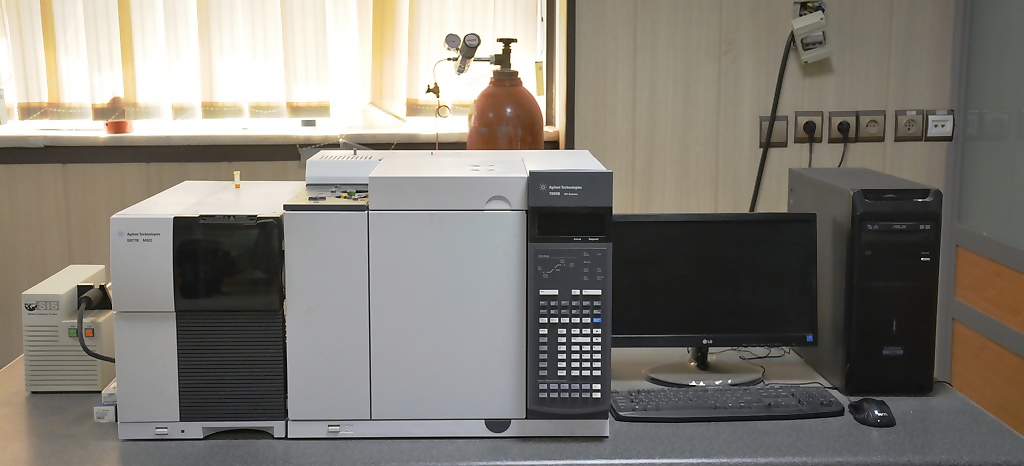LEARNING FACILITIES
- Museum of Science and Nature
- Central Laboratory
- Atomic Absorption Spectrophotometry
- Multi-Channel Battery Test System
- CHNS-O Elemental Analyzer
- GenPure ultra-pure water systems
- Scanning electron microscopy
- Gas Chromatography
- Gass Chromatography Mass Detector
- High-Performance Liquid Chromatography
- Inductively Coupled Plasma
- Liquid Nitrogen Producing Machine
- FT-NMR spectrometer
- Scanning Probe Microscopy
- Simultaneous Thermal Analyzer
- Transmission Electron Microscopy
- Electrospinning
GASS CHROMATOGRAPHY MASS DETECTOR

GC or Gas Chromatograph is one of the most commonly used laboratory equipment for isolating and identifying materials. This method is primarily used to analyze materials that do not decompose in vapor. The GC device is used in some cases, such as determining the purity of a substance and separating different components of a compound (by determining the proportion of the components).
In the GC gas chromatography, we have a stationary phase and a moving phase. The moving phase is in fact the carrier gas that contains the analyte sample. An analyte sample is usually injected into the liquid state. After that, the liquid is brought to steam and mixed with the carrier gas, and after the mixing of this mobile phase, it enters the column. As a result of the passage of the phase of the chromatography column, part of the sample is absorbed by a stationary phase. In fact, the basis of separation in gas chromatography or GC is the same as the tendency of the sample to a stagnant phase passing through the column. The adsorbed components are separated depending on the interacting with the stationary phase at intervals and gradually separated from it. After separating the sample from the stationary phase and leaving the column, the detection of the material and its amount in the analyte is determined by the GC detector and its output signals.

